Sometimes you have to make a wooden hand rail to fit a metal or cement stair with an existing metallic railing.
If you are building a hand rail for a modern metallic stair the shapes are usually geometrically true and the easiest way to go is use the tangent system and twisted laminates. You can read about these techniques in my eBook How to Build Curved Hand Rails
But it often happens that the rail is made of free form curves that were built on site by the metal worker and the problem becomes not only how to carve the hand rail but also how to get the shape of the metallic rail back to the workshop.
The following system gives a simple way of getting the on site measurements and shapes and using them to build a wreathed hand rail that can be moulded.
Here’s photo of a metalic rail that is twisting and rising in a non uniformed manner:
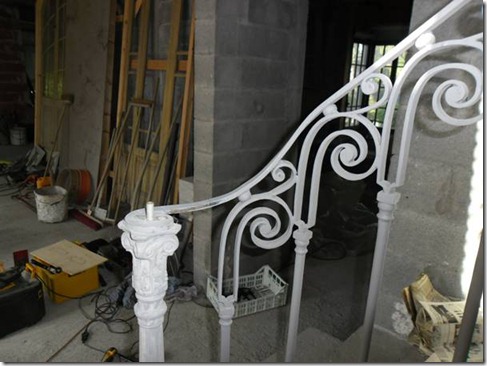
To build a wooden hand rail for this stair I cut small sections that will fit over the metal rail, each section twisting up at right angles to the pitch.
The sections are drilled with 2 holes to thread them through with an aluminium wire that holds them together, to give a sort of mobile “snake”.
Each section had a hole on the side that gives into a chamber that allows me to inject polyurethane glue between the sections to freeze the shape of the railing.
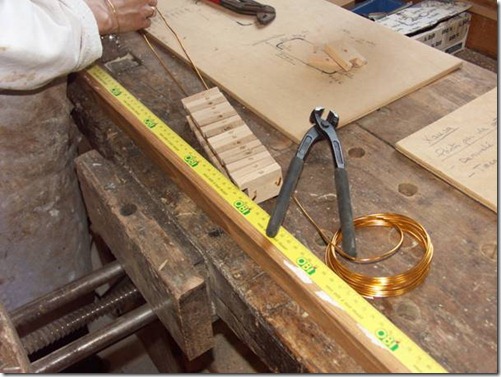
Here’s a few metal hand rails being sized up.

The snakes are clamped onto the metallic rail with cut up upholstery springs and the polyurethane glue is injected to fix the shape.
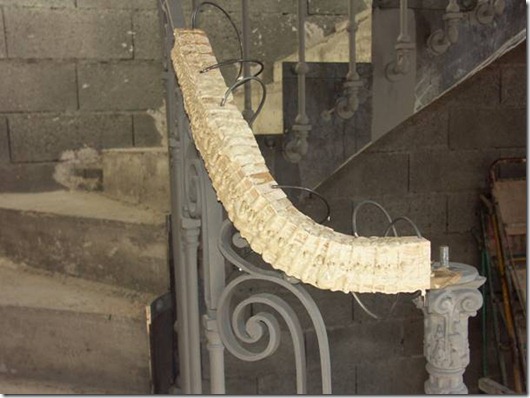
Note that the metallic rail is first covered with plastic masking tape to avoid the glue sticking to it.
Once dry the wooden shape is gently removed from the metallic rail and taken to the workshop. At this stage the rail is very fragile and must be handled with care.
If you have a 3D digital scanner and use CNC, you can scan these models and use the coordinates to machine up the hand rails on your CNC.
But that’s another story……….
To build the hand rail by hand, the form is covered with layers of 2mm veneers or laminates.
To avoid the form being pulled out of shape by the first layers I renforce the rail with a plaster and fibre mix on the under side of each rail.
A mould is made by using a strip of plastic fixed with double sided tape and a few springs to each side of the rail..
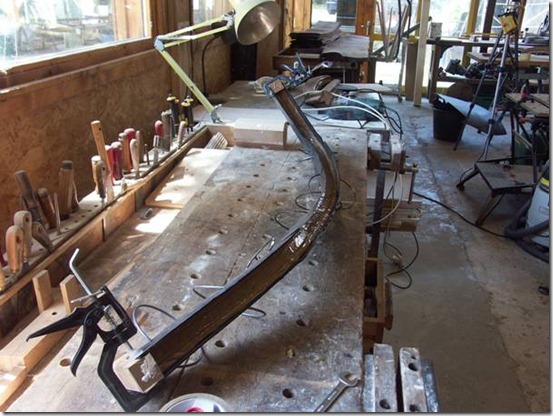
The mould is filled with the plaster and fibre mix.
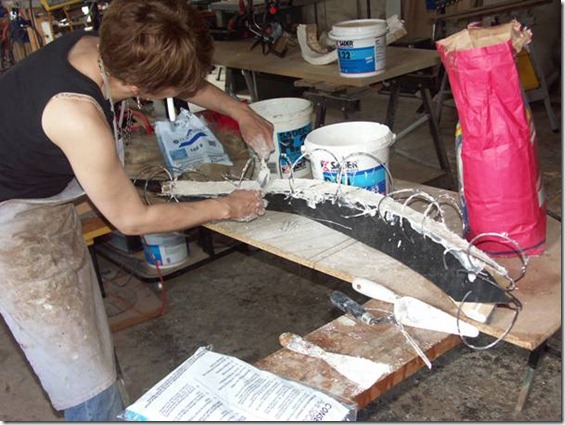
Here are some of the parts ready to be cleaned up.
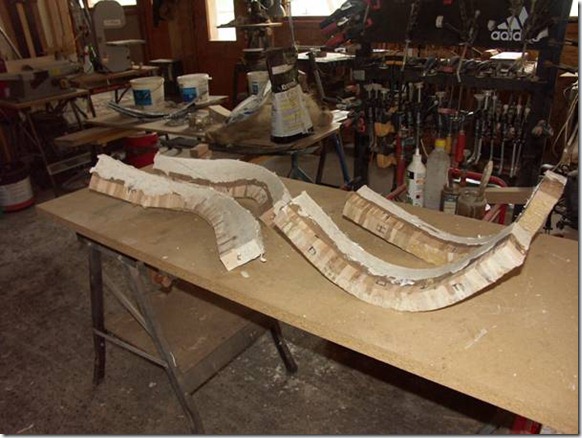
Once dry the reinforced forms are cleaned up with a disk sander.
Because of the free form curves the real shape of the laminates is often difficult to estimate.
To get these shapes as exact as possible I use double sided tape to fix cardboard on each face of the rails that give me cutting templates for the laminates.
The 2 mm laminates are cut up using a mini circular saw and after gluing, trimmed with a mini drill.
Once the form is veneered on 3 faces with 2 layers of 2mm laminates it’s usually extremely ridged.
The cardboard templates can used to cut up the finishing laminates, in this case walnut, that can be glued without the rail being pulled out of shape.
Here are a few of the forms ready for the finishing laminate to be glued up.

Here’s a short video to give an over view of this method:
I’ll be posting another article showing the finishing of these rails.
Hope you have found this interesting.
Please have a look at this article for more information on curved stairs.
How to build curved stairs and handrails
Please leave a comment to tell me what you think of this technique and eventually of the way you would build these hand rails.
Happy wood working to all.
Ness
You can also download our stair software here, or register for Premium Support if you need help with these or any other stair building techniques.

It’s good to know that the exterior fo the railing will be covered with veneers so that it looks really nice. My spouse and I are thinking about getting some new railings in our home this year. We need to find a contractor that can help us build these railings properly so that they look really nice.
Está impresionante, soy aficionado a la carpintería y voy a hacer un pasamanos sobre hierro y pues haber como me sale, aparentemente al verlo aquí parece realizable, pero se que es muy diferente al hacerlo en real. Muy interesante las explicaciones.
Gracias y saludos
It’s impressive, I am fond of carpentry and am going to do a rail on iron and these seem here to be realizable, but that is very different on having done it in reality. Very interesting the explanations.
Thanks and regards
Dear Ness Telson
Hi,
Thanks for your Email.Great Job done, here in Dubai or gulf states most of the villa construction has metal staircase with wooden handrail but they dont get finish speciall at curve joints.
regards
tafheem